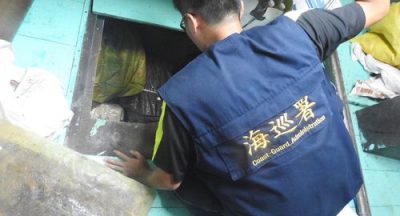Golden Triangle: Challenges to India’s National Security
Sun Tzu’s famous words “The nature of war is constant change” looks like a premonition of today’s world, engulfed in multiple types of war. Indian security forces with their primary mission of ensuring national security from external aggression are also engaged in preventing various non-conventional threats emerging from poor governance, economic backwardness, terrorism, drug trafficking, gun running, ethnic conflicts, large-scale migration, and environmental degradation that infringe national security.
One such threat to our internal security is the menace of drug trafficking. The growing instances of drug trafficking in India were highlighted in the 2018 annual report by the United Nations-backed International Narcotics Control Board (INCB). According to the report, India is one of the major hubs for illicit drug trade. Though drug abuse prevails across India, regions in the northwest and northeast have rampant linkages with the global narcotics industry. India’s strategic location places it amid two largest sources of illicit drugs in South Asia- Golden Crescent (Pakistan, Afghanistan, and Iran) on the northwest and the infamous Golden Triangle (Myanmar, Thailand, and Laos) on the northeast. This article will focus on the key challenges to India’s security concerns with respect to the Golden Triangle.
Golden Triangle
The notorious Golden Triangle represents the region coinciding with the rural mountains of Myanmar, Laos, and Thailand. It is Southeast Asia’s main opium-producing region and one of the oldest narcotics supply routes to Europe and North America. With a 1643km long border with Myanmar, India has been at risk for the longest time, even before the emergence of Golden Crescent.
States of Arunachal Pradesh, Manipur, Mizoram, and Nagaland share their border with Myanmar. Drugs including opium, heroin, methamphetamine and many more are smuggled from Myanmar into the northeast. Also, drugs illicitly cultivated in India travel through the same route for trade. Drugs produced in the ‘Golden Triangle’ enter India through Mizoram, Manipur, and Nagaland from Bhamo, Lashio, and Mandalay in Myanmar. The route bifurcates and one channel moves northwards through Moreh in Manipur while other moves southwards to enter Champai in Mizoram. Moreh (Manipur), Champai (Mizoram), Dimapur (Nagaland), and Guwahati (Assam) have become the nucleus of drug trafficking industry in India’s northeast.
https://indianarmy.nic.in/writereaddata/CLAWS/Golden%20Triangle.htm
Related Posts
Fine of up to QR1m for smuggling oil products
Emir H H Sheikh Tamim bin Hamad Al Thani yesterday issued Law No. 6 of 2016 on...
Authorities probe dirty tactics in counterfeit laundry detergent scheme
Israeli authorities have launched an investigation into allegations of an ongoing...
DRI arrests 4 men with forex worth Rs 1.27 crore at Delhi airport
The Directorate of Revenue Intelligence (DRI) has arrested four men departing for...
NT$10 million in smuggled tobacco seized in Pingtung.
Taiwan's Coast Guard Administration (CGA) busted a tobacco smuggling operation in...






